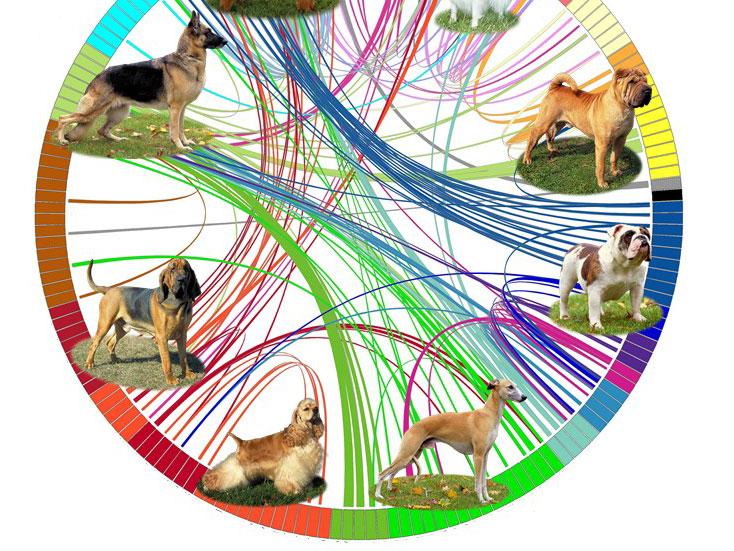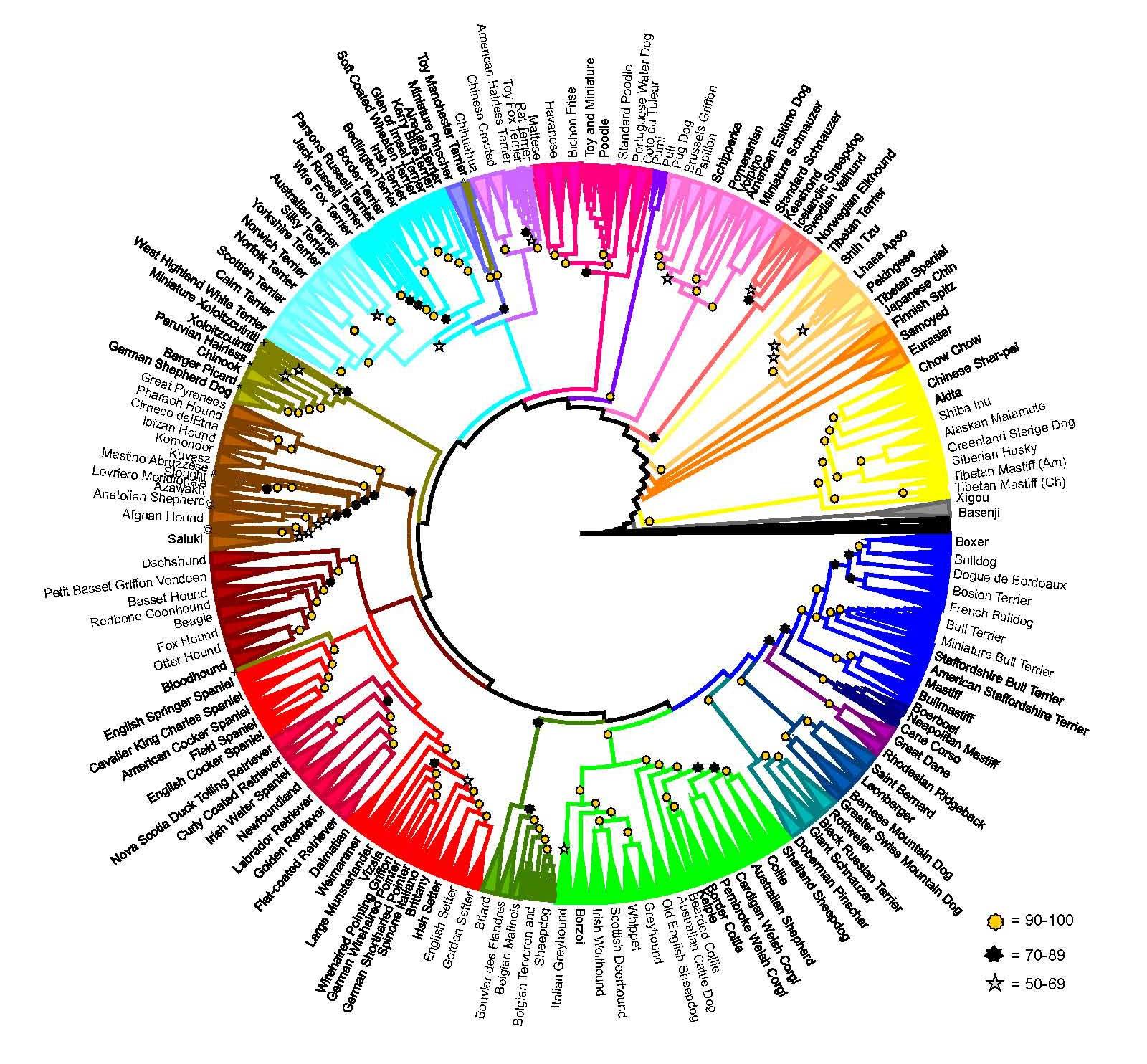Genetic map of dogs' evolution could shed new light on causes of cancer and diabetes
The research could help find new ways to treat diseases that affect both humans and our canine friends

Your support helps us to tell the story
This election is still a dead heat, according to most polls. In a fight with such wafer-thin margins, we need reporters on the ground talking to the people Trump and Harris are courting. Your support allows us to keep sending journalists to the story.
The Independent is trusted by 27 million Americans from across the entire political spectrum every month. Unlike many other quality news outlets, we choose not to lock you out of our reporting and analysis with paywalls. But quality journalism must still be paid for.
Help us keep bring these critical stories to light. Your support makes all the difference.
An evolutionary tree of more than 161 dog breeds has been mapped out by geneticists, showing which types are closely related to each other.
The research will obviously be of interest to dog owners but it is hoped it will shed light on the causes of diseases that affect both dogs and humans, including cancer. Some breeds are prone to conditions which are rare in others and the genetic differences between them could lead to a new form of treatment – for both species.
The scientists also discovered genetic evidence that dogs made the journey over the land bridge that once connected North America with modern-day Russia.
While most dogs in the Americas are descended from animals brought over from Europe, evidence of these ‘New World’ breeds can still be seen in the genetics of existing animals.

The Peruvian hairless dog and the Xoloitzcuintle were found to be probable descendants of the original New World breed.
Dr Heidi Parker, a dog geneticist at the US National Institutes of Health (NIH), said: “What we noticed is that there are groups of American dogs that separated somewhat from the European breeds.
“We've been looking for some kind of signature of the New World dog, and these dogs have New World dogs hidden in their genome.”
The researchers, who published a paper about the study in the journal Cell Reports, said the first types of dog evolved or were bred to perform specific tasks.
“First, there was selection for a type, like herders or pointers, and then there was admixture to get certain physical traits,” Dr Parker said.
“I think that understanding that types go back a lot longer than breeds or just physical appearances do is something to really think about.”
The need to herd livestock was an early use for man’s best friend that saw these breeds developed at a number of different times and places.
“When we were looking at herding breeds, we saw much more diversity, where there was a particular group of herding breeds that seemed to come out of the United Kingdom, a particular group that came out of northern Europe, and a different group that came out of southern Europe, which shows herding is not a recent thing,” Dr Parker said.
“People were using dogs as workers thousands of years ago, not just hundreds of years ago.”
Gun dogs like golden retrievers and Irish setters were traced back to Victorian England and were grouped alongside each other on the evolutionary tree with other breeds like spaniels.
Middle Eastern and Asian breeds like the saluki, chow chows and akitas all diverged long before what has been called the ‘Victorian Explosion’ of dog breeds.
All the dogs whose genomes were sequenced for the study were volunteered by their owners, the researchers stressed.
Dr Elaine Ostrander, who researches the genetics of cancer at the NIH, explained their method of finding new recruits, which mainly involved trips to dog shows.
“If we see a breed that we haven’t had a good sample of to sequence, we definitely make a beeline for that owner,” she said.
“And say, ‘Gosh, we don't have the sequence of the Otterhound yet, and your dog is a beautiful Otterhound. Wouldn't you like it to represent your breed in the dog genome sequence database?’
“And of course, people are always very flattered to say, ‘Yes. I want my dog to represent Otterhound-ness’.”
There are some 400 different breeds of dogs so the researchers still have some way to go before they can develop a full family tree.
Like humans, dogs can get diseases like epilepsy, diabetes, kidney disease, and cancer.
The prevalence of these diseases varies significantly between dogs, which could help find genes with protective or harmful effects.
“Using all this data, you can follow the migration of disease alleles and predict where they are likely to pop up next, and that's just so empowering for our field because a dog is such a great model for many human diseases,” Dr Ostrander said.
“Every time there's a disease gene found in dogs it turns out to be important in people, too.”
Subscribe to Independent Premium to bookmark this article
Want to bookmark your favourite articles and stories to read or reference later? Start your Independent Premium subscription today.
Join our commenting forum
Join thought-provoking conversations, follow other Independent readers and see their replies
Comments